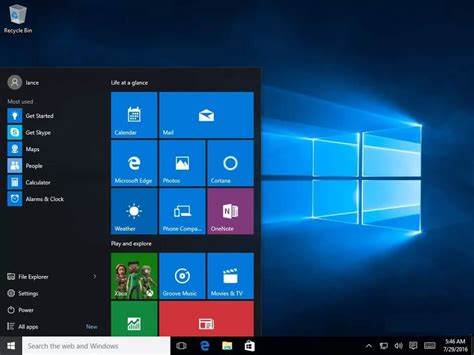In the ever-evolving realm of technology, computer Windows software stands as the backbone of functionality. This article delves into the multifaceted landscape of Windows software, exploring its diverse facets and the pivotal role it plays in shaping the digital experience.
The Genesis of Windows Software
Windows software, the brainchild of Microsoft, had its genesis in the 1980s. The initial iterations laid the foundation for a graphical user interface, revolutionizing how users interacted with computers. The evolution of Windows software reflects a journey marked by innovation, adaptability, and a commitment to user-friendly computing.
Diversity in Applications
One of the defining features of Windows software is its vast ecosystem of applications. From productivity tools like Microsoft Office to creative suites and gaming platforms, Windows caters to a spectrum of user needs. The diversity in applications underscores the platform’s versatility, making it a hub for both work and leisure.
Operating System Dynamics
At its core, Windows software operates as an operating system, orchestrating the symphony of hardware and software components within a computer. The intricate dynamics involve resource management, security protocols, and user interface responsiveness. Windows continually refines these dynamics to ensure optimal performance and user satisfaction.
User Interface Innovation
The graphical user interface (GUI) of Windows software has undergone transformative innovation. Each iteration introduces aesthetic enhancements and functionality improvements. The start menu, taskbar, and window management have become iconic features, evolving to align with contemporary design principles and user expectations.

Updates and Security Protocols
Windows software is a dynamic entity, subject to periodic updates that introduce new features, fix vulnerabilities, and enhance performance. The evolution of security protocols within Windows reflects an ongoing commitment to fortifying the system against cyber threats, ensuring user data remains protected.
User Community and Support Ecosystem
The vibrant user community surrounding Windows software forms a crucial aspect of its enduring success. Forums, online communities, and user groups create a space for individuals to share insights, troubleshoot issues, and celebrate the platform’s capabilities. This interconnected support ecosystem not only fosters camaraderie among users but also serves as an invaluable resource for those navigating the intricacies of Windows software. The collective knowledge and shared experiences contribute to a robust support network, empowering users to extract the utmost from their Windows-powered devices.
Accessibility Initiatives and Inclusive Design
In recent years, Windows software has made strides in embracing accessibility initiatives and inclusive design. Recognizing the diverse needs of users, Microsoft has integrated features like Narrator, Magnifier, and speech recognition tools, enhancing the usability for individuals with different abilities. This commitment to inclusivity extends beyond functionality to consider various modes of interaction, ensuring that Windows software is a tool accessible to a broad spectrum of users. As technology progresses, the emphasis on accessibility reaffirms Windows’ dedication to providing an inclusive and user-friendly computing experience for everyone.
Compatibility Challenges
Despite its widespread use, Windows software grapples with compatibility challenges, especially when bridging older and newer versions. Ensuring seamless interoperability across diverse hardware configurations and software applications remains a perpetual endeavor for Microsoft.
Customization Capabilities
One of Windows’ strengths lies in its customization capabilities. Users can personalize their desktop environments, choose themes, and configure settings to align with individual preferences. This flexibility enhances the user experience, fostering a sense of ownership over the digital workspace.
The Role in Enterprise Solutions
software has entrenched itself as a cornerstone in the realm of enterprise solutions. The compatibility with business applications, security features, and centralized management tools positions Windows as a preferred choice for organizations seeking a robust and scalable computing infrastructure.
Future Trajectories
As technology marches forward, the future trajectories of software promise continued innovation. The integration of artificial intelligence, augmented reality, and enhanced cybersecurity measures are anticipated. Windows is poised to adapt and lead the way in shaping the digital landscape for generations to come.
Conclusion
In the grand tapestry of computer technology, software stands not just as a platform but as a testament to the evolution of digital interaction. From its humble beginnings to its current ubiquity, Windows continues to shape the way we compute, connect, and create. As we traverse the ever-expanding horizons of technology, Windows software remains a luminary, illuminating the path of digital progress.
